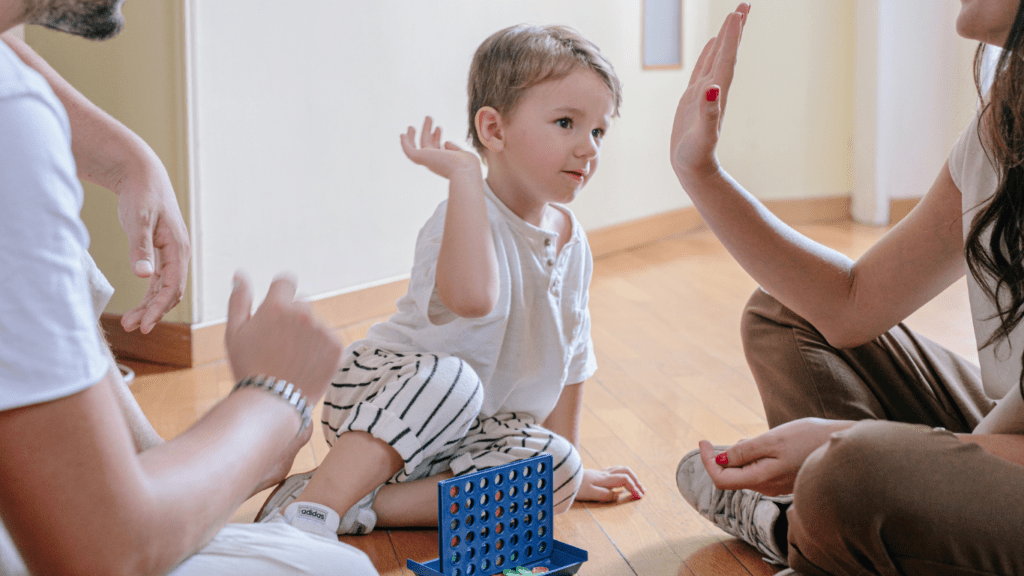Watching a child grow is one of the most rewarding experiences, but let’s face it—it can also feel overwhelming. From their first smile to their first steps, every milestone is a mix of excitement and curiosity. I’ve found that understanding these stages not only helps ease the uncertainty but also empowers us to support their development in meaningful ways.
Understanding Child Development Milestones
Child development milestones are benchmarks that indicate typical progress in a child’s physical, emotional, social, and cognitive abilities. Tracking these milestones helps identify growth patterns and provide targeted support.
What Are Child Development Milestones?
Child development milestones are specific abilities or behaviors that most children achieve by a certain age. Examples include a baby’s first smile at around six weeks or walking independently around 12 to 15 months. These milestones cover domains like gross motor skills (e.g., crawling), fine motor skills (e.g., picking up objects), language development (e.g., saying their first words), and social interaction (e.g., playing with peers).
Milestones are not rigid deadlines but general indicators of development. Variations occur due to differences in environment, genetics, and stimulation. Professionals use guidelines, such as those from the Centers for Disease Control and Prevention (CDC), to help identify typical and atypical progress.
Why Are Milestones Important?
Milestones provide a reference for understanding a child’s growth and identifying potential delays. Parents and caregivers use these benchmarks to celebrate accomplishments and seek intervention when necessary. For instance, if a toddler isn’t using simple words by 18 months, consulting a pediatrician may uncover underlying issues.
Early identification of developmental concerns enables timely intervention, improving outcomes in areas like speech or motor skills. Milestone tracking also strengthens caregiver-child bonds by encouraging active engagement in daily learning and play activities.
Key Stages of Child Development
Child development follows distinct stages, each defined by specific milestones across physical, emotional, social, and cognitive domains. Understanding these stages helps me better support a child’s growth and address their unique needs effectively.
1. Infancy (0-12 Months)
Infants experience remarkable physical growth and sensory development during this stage. Babies typically begin to control their head movements by around 3 months, roll over by 4-6 months, and sit unsupported by 6-8 months. Socially and emotionally, they display attachment behaviors like smiling at familiar faces or crying when separated. Cognitive milestones include recognizing caregivers’ voices and experimenting with sounds, laying the foundation for future language skills.
2. Early Childhood (1-3 Years)
During early childhood, toddlers develop mobility and independence. Most learn to walk within 12-18 months, run by age 2, and climb stairs with support by 3. Social skills evolve as toddlers imitate others and begin playing alongside peers. Emotionally, tantrums may occur as their self-expression develops. Cognitive growth includes identifying shapes and colors, following simple instructions, and naming familiar objects.
3. Preschool Age (3-5 Years)
Preschoolers refine motor coordination and social awareness. Physically, they can hop on one foot, draw simple shapes, and use utensils. Emotional growth includes recognizing and managing feelings, though mood swings may persist. Socially, they engage in group play and begin forming friendships. Cognitively, preschoolers grasp concepts like counting, letter recognition, and storytelling, showing significant progress in language use.
4. School Age (6-12 Years)
School-age children develop advanced learning abilities, stronger motor skills, and self-confidence. Physically, they grow steadily and improve coordination, excelling in activities like biking or team sports. Socially, peer relationships gain importance, and they start understanding group dynamics. Emotionally, they learn empathy and problem-solving skills. Cognitively, school-age children master reading, complex math, and reasoning, becoming progressively independent in their studies.
5. Adolescence (13-18 Years)
Adolescence marks the transition into adulthood with significant physical and psychological changes. Puberty typically begins between 9-16 years, triggering rapid growth and hormonal shifts. Socially, teenagers seek independence and peer approval while navigating complex relationships. Emotionally, self-identity and coping mechanisms take center stage. Cognitive abilities like critical thinking, decision-making, and long-term planning develop, preparing them for adult responsibilities.
Practical Tips for Supporting Each Stage

Each developmental stage offers unique opportunities for growth. By applying tailored strategies, I help nurture a child’s physical, cognitive, emotional, and social progress effectively.
Encouraging Physical Development
I incorporate activities that promote:
- strength
- coordination
- motor skills
For infants, I encourage tummy time to build neck and shoulder muscles. As toddlers grow, I introduce climbing, dancing, or simple obstacle courses to enhance gross motor abilities. For preschoolers, I offer tools like scissors or blocks to refine fine motor skills. Regular outdoor play helps school-age children build endurance and fosters overall health. In adolescence, I motivate participation in sports or fitness routines to support physical changes.
Supporting Cognitive Growth
I stimulate a child’s thinking and problem-solving skills through age-appropriate activities. For infants, I use colorful toys and interactive play to encourage sensory exploration. Toddlers benefit from puzzles, shape sorters, and books that introduce new concepts. During preschool years, I include counting games and storytelling to boost memory and creativity. In school-age children, I promote critical thinking with hands-on projects and structured challenges. Adolescents thrive with opportunities for independent learning, goal-setting, and discussions on complex topics.
Fostering Emotional and Social Skills
Building a child’s emotional intelligence requires consistent engagement. I respond warmly to an infant’s cues, offering comfort and trust. For toddlers, I guide them in labeling their emotions and practicing patience. Preschoolers gain from role-playing activities that teach empathy and cooperation. School-aged kids benefit when I encourage teamwork in sports or group settings, helping them navigate friendships. With adolescents, I maintain open communication, respect their opinions, and provide support as they develop self-awareness and interpersonal skills.
Common Challenges and Solutions
Child development often includes hurdles that can feel overwhelming. Recognizing issues and addressing them promptly ensures a smoother journey for both children and caregivers.
Identifying Developmental Delays
Observing a child’s behavior and abilities against typical milestones helps in spotting delays. If a six-month-old struggles to hold their head up or a two-year-old doesn’t use single words, these may indicate developmental concerns. Frequent tantrums beyond toddlerhood could suggest a need for emotional and social support. Tracking progress and noting missed milestones provides critical insight.
Seeking Professional Guidance
Pediatricians, child psychologists, and occupational therapists play vital roles in addressing delays. For example, referrals to speech therapists help children with communication struggles, while physical therapists assist with motor challenges. Early intervention programs, often available for free or at a low cost in many regions, offer structured support for children with identified delays. Engaging professionals aids in implementing effective strategies tailored to the child’s specific needs.
Final Thoughts on the Importance of Support
Providing consistent support across all stages of a child’s development strengthens their ability to grow, learn, and thrive. Milestones offer a general framework for understanding progress, but the real value lies in how caregivers respond to a child’s unique journey. Individualized care fosters confidence and helps children navigate challenges effectively.
Active involvement in a child’s daily life enhances their emotional security and builds a foundation for lifelong resilience. For example, responding with warmth to an infant’s cues creates a sense of safety, while guiding a teenager through decision-making supports their critical thinking. This intentional approach to support enables children to feel understood and encouraged.
Early identification of developmental concerns ensures that intervention strategies can be implemented promptly. Engaging with professionals, where needed, ensures tailored solutions that address specific challenges. For instance, seeking advice from a speech therapist when a child struggles with language milestones can significantly impact their communication skills.
Focusing on both strengths and areas of improvement cultivates an environment where growth happens naturally. By celebrating achievements, like a toddler mastering a new word or a teenager excelling in a hobby, caregivers reinforce motivation and self-esteem. Every form of support, whether emotional, physical, or cognitive, shapes a child’s development positively.





